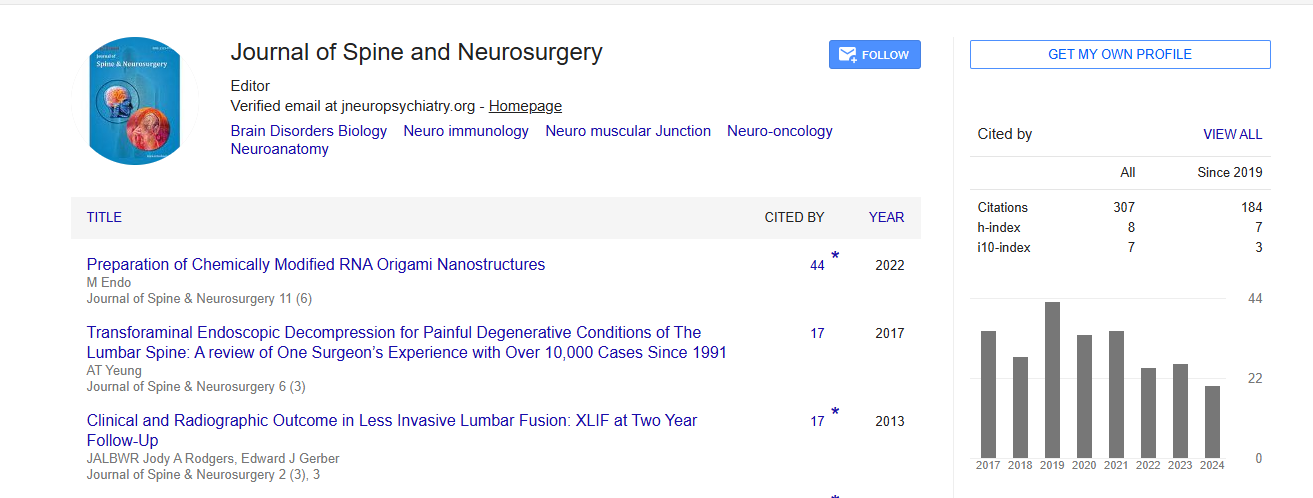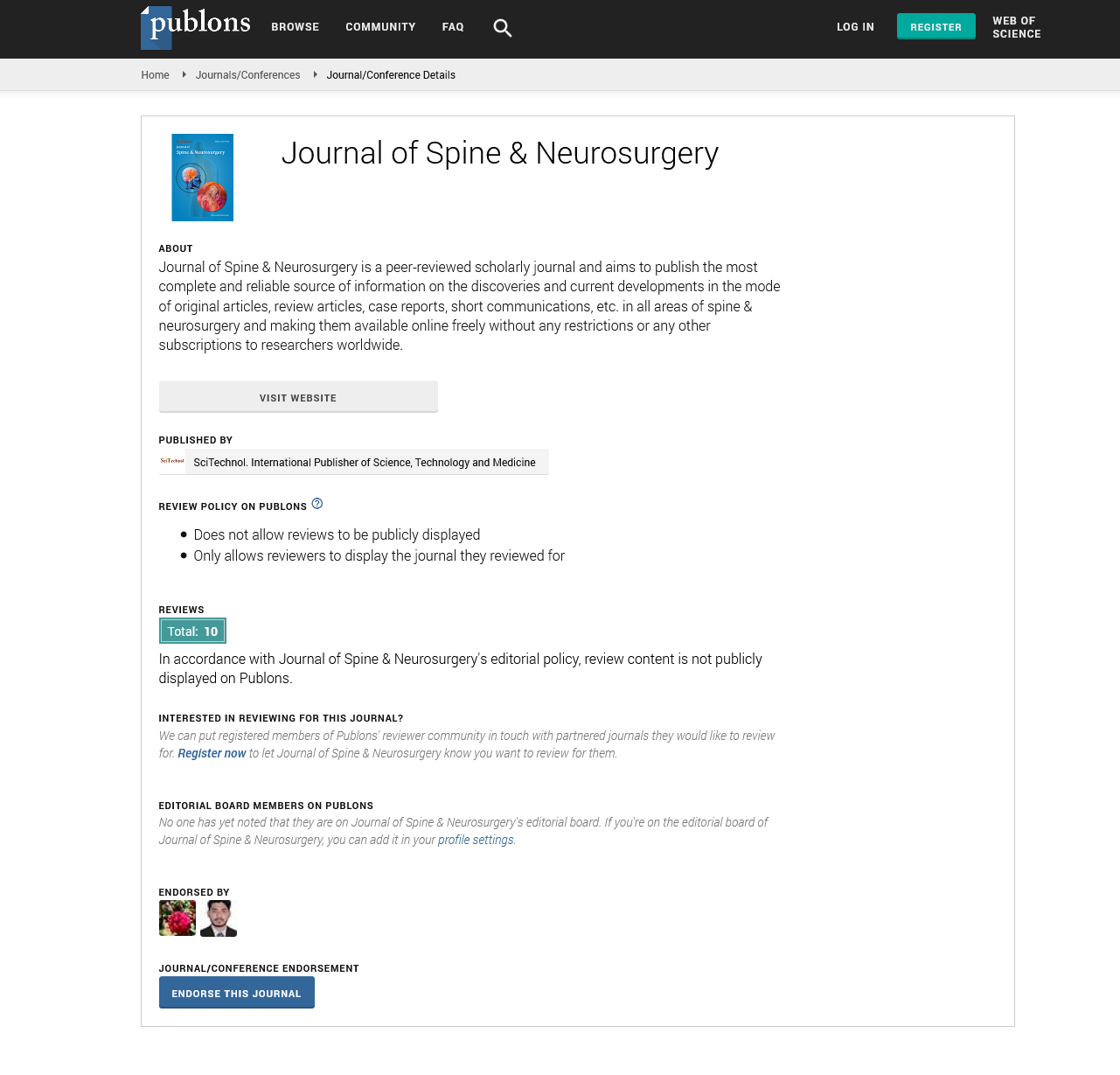Complement system in neonatal hypoxia-ischemia injury: The role of the alternative pathway
Claudia Sisa
UCL Institute for Women’s Health, UK
: J Spine Neurosurg
Abstract
The interruption of oxygen and blood flow to the brain of the infant during pregnancy or at the time of birth leads to neonatal hypoxia-ischemia (HI). This pathology has high morbidity and mortality, causing 4 million neonatal deaths per year and affecting up to 26 every 1000 live births in the developing countries. Moreover, the presence of an intrauterine bacterial infection sensitizes the brain of the baby to the HI insult. The complicated pathological course makes neonatal HI difficult to treat. The current standard treatment is therapeutic hypothermia, which is effective only in the 40% of cases, and it is not applicable in infectionsensitized conditions. Therefore, the need to develop new treatments for neonatal HI is urgent. The complement system as part of the innate immune system, contributes to pathogens elimination and mediation of the inflammation. The classical pathway is activated in neonatal HI, maintaining a pro-inflammatory state. The involvement of the alternative pathway has not been explored in HI. Properdin is known as the only positive regulator of the complement system, constitutively activating the alternative pathway. This project aims to explore the effects of the inhibition of such pathway in a mouse model of neonatal HI. P7 mice knocked-out for properdin gene underwent either neonatal HI insult alone or HI in the presence of LPS sensitization. Histological assessment of brain tissue extracted from the two experimental models showed a reduction in microglial activation and cell death in properdin knockout mice compared to the wild type littermates. In conclusion, within the complement system, the alternative pathway alone plays a crucial role for the pathological development of neonatal HI. In addition, we can speculate that to have neuroprotection in this model, it might be necessary to act on both peripheral and central immune system at the same time.
Biography
Claudia Sisa is a BBSRC funded PhD Student at Institute for Women’s Health at University College London. Her research interest is in neuroscience. Her research studies are on new therapeutic approaches for neonatal hypoxia-ischemia brain damage. She has worked with nanoparticles, peptides and knock-out mice, collaborating with other universities and UCL departments.
E-mail: claudia.sisa.16@ucl.ac.uk
 Spanish
Spanish  Chinese
Chinese  Russian
Russian  German
German  French
French  Japanese
Japanese  Portuguese
Portuguese  Hindi
Hindi 
